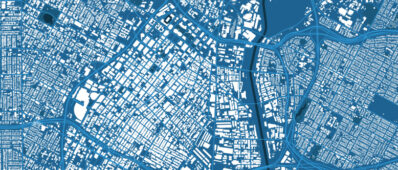Abstract
This dissertation delves into the intersection of two critical elements shaping the future of transportation: opportunities and the challenges presented by shopping delivery services, particularly same-day delivery (SDD), and the necessity to anticipate and explore the forthcoming transportation paradigm with the new possibilities offered by Autonomous Vehicles (AVs). This study investigates the transformative potential of SDD services facilitated by a fleet of shared autonomous vehicles (SAVs) to reshape daily shopping trips and activities.With a dual focus on both the network and household layers, the dissertation addresses the viability of SDD services, considering vehicle miles traveled (VMT) savings and operational strategies for efficient fleet management on one side, and the impacts on travel patterns on the other. Leveraging real-world data for the network of Irvine, CA, and employing optimization methodologies, this dissertation (i) investigates the potential VMT savings from SDD compared to the base scenario where households conduct their own shopping activities, (ii) analyzes the optimal fleet size needed to achieve significant VMT reductions, and (iii) evaluates operational strategies for cost-effective and efficient service delivery. In this dissertation, I analyze the optimal fleet size and system design settings needed to achieve significant VMT reductions without losing profitability and I evaluate operational strategies for cost-effective and time-sensitive service delivery.At the network layer, the system is modeled as a multi-Vehicle and Multi-Depot Pickup and Delivery Problem with Time Windows (m-MDPDPTW), which was implemented in Google OR-Tools. The depots are assumed to be at the warehouse locations from where shopping goods deliveries are made. An analysis is presented for a delivery service comprising an AV fleet serving households on their daily shopping trips for the case study of the City of Irvine, CA. The results indicate these services can significantly decrease the distance traveled and the time spent for shopping trips. The dissertation tests several scenarios to determine how varying possible service operation parameters as well as demand characteristics would affect the results. Scenarios involving varying percentage of the service demand, time window for deliveries, loading/unloading time, and warehouse distribution are considered.At the household layer, the dissertation examines how the SDD service influences household travel patterns and savings, using output from the California Statewide Travel Demand Model (CSTDM) for the City of Irvine. The time saved is used as an accessibility measure. Using the Household Activity Travel Pattern Problem (HAPP), formulated as a pickup and delivery problem with time windows for household daily activities, time saved is compared over four distinct scenarios: a base (existing) case with CSTDM patterns, the HAPP-optimized version of the base case, the base case excluding shopping trips, and its HAPP-optimized version. HAPP-based analysis sheds light on new opportunities in travel and activity planning enabled by AVs as well as insights into future activity patterns shaped by subscription services that may lead to more optimized travel patterns. High Performance Computing is used to tackle the NP-Hard computational problem involved in HAPP in the real-world case study with a large set of households.This research is also intended to establish the viability of operationalizing a HAPP-methodology for analyzing realistic travel network contexts, for transportation policies that involve innovative vehicle usage and routing patterns. A HAPP solution is not a model for the actual household-level travel behavior, but rather a constraint-driven optimal version of it. Nonetheless, with the availability of rich individual level activity data now and in the future, HAPP can indeed become an optimizer for households, if computational problems can be surmounted. This dissertation establishes that computational problems are not insurmountable with current cloud and advanced computing options, even for 4-member households with activities substitutable across individuals, which past research had generally avoided. The research illustrated that, for a real-world network that has an individual and household-level activity-based planning model, or at least a synthesized model of that kind, policy analysis for future transportation options can be done using HAPP to find an optimized implementation of the policy when the behavioral response to such policy is not available in the existing activity models or data. The dissertation also points to future research possibilities involving faster optimizations that can be achieved if HAPP can be implemented with starting feasible solutions that may be developed from existing networks.




